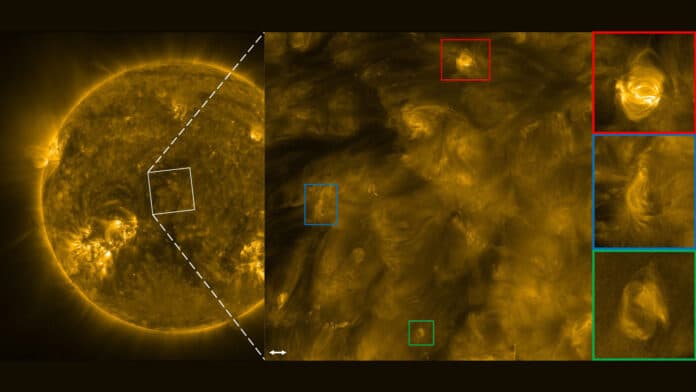The coronal heating problem is one of the long-standing astrophysical puzzles. The Sun’s core is the sole place where heat is produced. However, the photosphere, the surface of the Sun, is only around 200 times hotter than the corona, the solar atmosphere‘s outermost layer.
High-frequency magnetic waves may be crucial in maintaining the Sun’s atmosphere at millions of degrees, according to research conducted by a team of scientists from the Royal Observatory of Belgium (ROB) and KU Leuven. The most intriguing solar mystery—why is the Sun’s atmosphere hotter than its surface—is now clearer in light of this discovery.
Prof. Tom Van Doorsselaere at KU Leuven says, “Over the past 80 years, astrophysicists have tried to solve this problem, and now more and more evidence is emerging that magnetic waves can heat the corona.”
The Extreme Ultraviolet Imager (EUI) telescope on board Solar Orbiter, a spacecraft of the European Space Agency (ESA), which is now viewing the Sun from behind, provided the observations that led to the development of this new understanding.
The critical question the researchers were trying to answer was whether the energy coming from these new, fast oscillations was more than from known, similar, but slower oscillations. The scientific team conducted a statistical meta-analysis combining data from many scientific studies to identify undiscovered commonalities.
They concluded that high-frequency waves contribute more significantly to the total heating generated by waves than low-frequency waves.
Dr. David Berghmans, the principal investigator of EUI, says, “Since her results indicated a key role for fast oscillations in coronal heating, we will devote much of our attention to the challenge of discovering higher-frequency magnetic waves with EUI.”
Journal Reference:
- Daye Lim, Tom Van Doorsselaere et al. The Role of High-frequency Transverse Oscillations in Coronal Heating. The Astrophysical Journal Letters. DOI 10.3847/2041-8213/ace423
